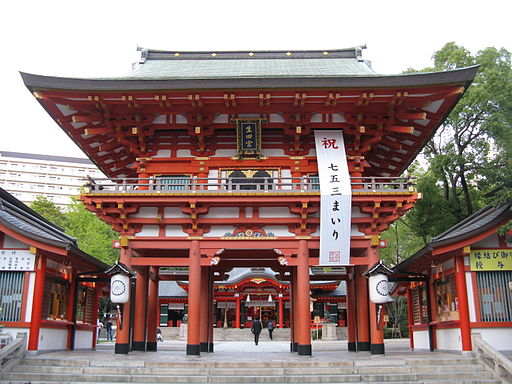Nov 17, 2015
How to Experience Kobe Without a Yen in Your Pocket

The cosmopolitan port city of Kobe is one of Japan’s biggest and busiest. Tucked into a nook between the Rokko mountain range and Osaka Bay, it is also one of Japan’s prettiest metropolitan areas. While two of its best known attractions, succulent Kobe beef and the hot springs of Arima Onsen will cost many yen to indulge, many of the natural, historical and cultural charms of the city can be experienced for free.
The Nunobiki Falls
The Rokko Mountains reach their loftiest peak at 931 metres. Hiking trails lead to several of the summits where panoramic views of the Kansai region spread out below. Very near the city, just a ten-minute walk from Shin-Kobe Station, reside the Nunobiki Falls, a quartet of hydro-spectaculars that form as the Ikuta River spills out of the mountains. The Ontaki, which twists 43 metres down an open rock face, is a particular favorite with photographers and nature lovers.
Nada Sake District
Thanks to an abundance of high-quality Kansai-region rice and easy distribution through the port of Kobe, the city’s Nada District has evolved into Japan’s top rice wine-producing region. Sake breweries proliferate here and many offer free tours and tastings. Several maintain sake museums with exhibits, tools and machinery that explain the history and production of Japan’s signature libation. The Hakutsuru Sake Brewery Museum caters to foreign visitors with English pamphlets and videos.
Kobe City Hall/Higashiyuenchi Park
Kobe has many breathtaking viewpoints scattered across the city but most, such as the Kobe Port Tower, charge admission. Not so at Kobe City Hall where the observation deck on the 24th floor is free and open every night until 10:00 p.m. for gazing at the surrounding mountains, the seaside and cityscape from the 30-story tower.
Next door to City Hall is Higashiyuenchi Park that began life as a foreigners’ settlement. Every year the park plays host to the Luminarie Festival that remembers the Great Hanshin earthquake that devastated Kobe in 1995 and claimed 6,000 lives. The lights go on for two weeks in December and the displays, attended by millions, are free. Also in the park is Flower Road, a thoroughfare immersed in blooms and botanical sculptures; Japan’s first flower clock also grows here.
Nofukuji Temple and Hyōgo Daibutsu
Legend has it that this temple is where Tendai Buddhism first took root in Japan after arriving from China in 805. The original temple is long gone and the current main hall dates only to 1953, with a reconstruction after the earthquake in 1997. The big attraction these days – literally – is Hyōgo Daibutsu, which claims to be the third largest Buddha statue in Japan. The first statue here was built in 1891 but was melted down for armaments in World War II. The current model, 18 metres high from street level, was raised in 1991.
Ikuta Shrine
This small Shinto temple in the center of the city traces its origins back 1,800 years to the reign of Empress Jingu. According to early Japanese history writings the emperor assigned forty families from the settlement that grew up around the temple to look after its maintenance. They were known as kanbe, which in the Japanese language begat…Kobe. Today the shrine is a serene sanctuary from the bustling everyday life outside its walls.
By KENPEI (Own work) [GFDL or CC BY-SA 3.0], via Wikimedia Commons


About the author